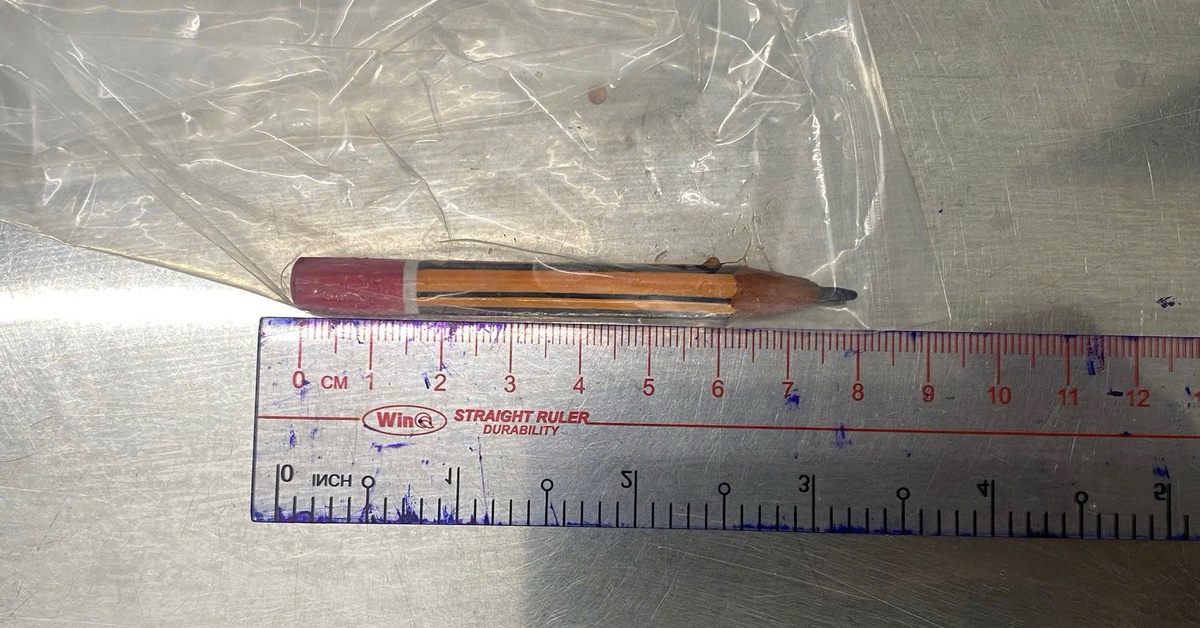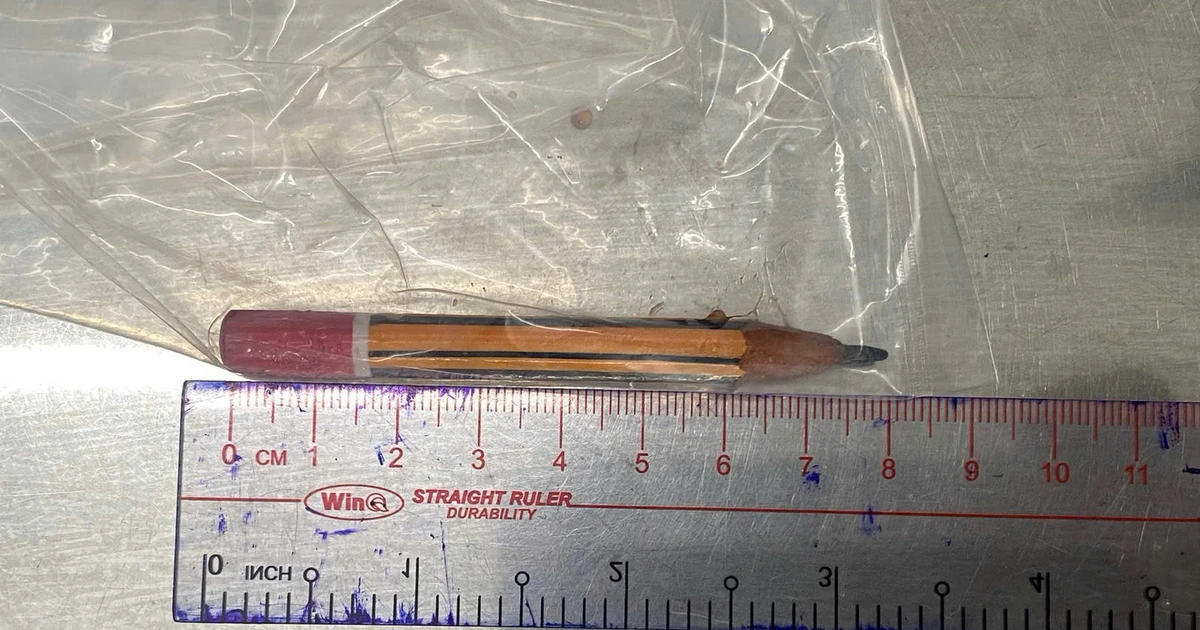Many men are hospitalized when their thyroid cancer is in its late stages because of the belief that this disease only occurs in women.
Medical news on November 18: Thyroid cancer is not only in women
Many men are hospitalized when their thyroid cancer is in its late stages because of the belief that this disease only occurs in women.
Unexpectedly discovered thyroid cancer
Without any symptoms and never having had a thyroid ultrasound before, but during a recent health check-up, Mr. NMT (26 years old, Ho Chi Minh City) was surprised to receive the results of stage I papillary thyroid cancer.
 |
| Many men are hospitalized when their thyroid cancer is in its late stages because of the belief that this disease only occurs in women. |
Accordingly, the thyroid ultrasound results showed a left lobe nodule measuring 6x8mm, irregular edges, vertical axis, microcalcification; accompanied by enlarged lymph nodes in the left neck measuring 22x12mm. Noticing the abnormality, the doctor ordered additional FT3, FT4, TSH tests to evaluate thyroid function, and at the same time, fine needle aspiration of thyroid nodules and neck lymph nodes to clarify the diagnosis.
The results showed that Mr. T. had papillary thyroid carcinoma in the left lobe, and the cervical lymph nodes were only inflamed. The patient was indicated for surgery to remove the left lobe and isthmus of the thyroid gland; the prognosis for recurrence and metastasis after surgery was very low.
BSCKI.Nguyen Thi My Le, Internal Medicine Specialist, Medlatec Go Vap General Clinic said that papillary thyroid cancer has a very good prognosis, a high survival rate of >98%, and at the same time, patients are detected at an early stage, which is a favorable condition for successful treatment, minimizing the risk of recurrence.
Not as lucky as Mr. T, Mr. NHV (50 years old, Binh Duong) discovered that his thyroid cancer had metastasized to the lymph nodes on both sides of his neck during a health check-up. Being obese and having a fat neck, Mr. V. did not detect the lymph nodes.
According to the treating doctor, if he had come to the hospital later, the malignant cells would have metastasized to the lungs, brain, bones, etc., causing pain, aching, difficulty breathing, and even death. Mr. V had surgery to remove his thyroid gland and dissect his neck lymph nodes.
According to statistics from the Global Cancer Organization (GLOBOCAN) in 2022, there are about 821,214 new cases and 47,507 deaths due to thyroid cancer in the world. In Vietnam, thyroid cancer ranks 6th among common cancers, with 6,122 new cases and 858 deaths each year.
The incidence of thyroid cancer in women is 3 times higher than in men, however, this does not mean that men can be subjective with this disease. In men, the disease tends to progress rapidly, easily metastasizes to lymph nodes, lungs, bones, brain... and has a high risk of recurrence.
Notably, most men detect thyroid cancer at a late stage, with a poor prognosis if not treated promptly.
Doctor My Le said that early stage thyroid cancer often has no symptoms and is discovered by chance through routine thyroid ultrasound.
In later stages, common symptoms include a mobile mass in the neck that moves with swallowing, painful swelling, hoarseness, difficulty breathing, difficulty swallowing, or swollen lymph nodes in the neck. Although this disease is common in women, men should not be subjective with this malignant disease, and should have regular thyroid ultrasounds to screen for the disease.
Doctors are concerned that thyroid cancer in men progresses rapidly, easily metastasizes to lymph nodes, lungs, bones, brain, etc., and has a high risk of recurrence.
Notably, most men detect thyroid cancer at a late stage, with a poor prognosis if not treated promptly.
Although thyroid cancer is three times more common in women than in men, the rate of men with thyroid cancer is increasing.
The cause of increased thyroid cancer in men is not exactly known, but the disease has some risk factors such as being overweight, obese, low iodine levels, exposure to radiation, genetics, etc. Notably, men with thyroid cancer have a worse prognosis than women.
Many men are still subjective, when they discover a tumor, they do not go to the doctor immediately for timely diagnosis and treatment. At the same time, the male neck has a strong muscular structure, so it is difficult to see the tumor. Therefore, men often discover the disease at a late stage, with a worse prognosis.
To detect and control thyroid cancer early, doctors recommend that thyroid cancer, especially papillary cancer in young people, often has a very good prognosis and a high success rate of treatment.
If detected early and treated properly, the survival rate after 10 years can reach 98% and after 20 years is 90%. Therefore, people should have a habit of regular health screening every 1-2 years to protect their health, detect potential diseases early and have a timely treatment plan.
Saving the life of a patient infected with Whitmore bacteria
Hue Central Hospital, branch 2 (located in Phong An commune, Phong Dien district, Thua Thien Hue province) said that after a period of treatment, patient NNT (born in 1982, residing in Phong Dien district) with Whitmore disease (also known as flesh-eating bacteria) has stabilized and is being monitored.
Previously, Mr. NNT had a high fever so his family transferred him to the Department of Tropical Diseases, Hue Central Hospital, branch 2.
After treatment, patient T.'s fever did not subside, so the doctors ordered an MRI of the left hip joint, which revealed that the patient had left hip arthritis of unknown cause. Next, patient T. had a blood test and the result was positive for the bacteria Burkholderia pseudomallei (Whitmore).
Master, Doctor, CKII Nguyen Dinh Khoa, Deputy Director of Hue Central Hospital, Branch 2, said that patient NNT had a rather special form of osteomyelitis because it is rare. Since being admitted to the hospital, patient T. has been monitored and tested, treated according to the Whitmore regimen to reduce fever and hip pain, and after a week, the fever has gone down and the pain has gone away. After finishing treatment at the hospital, the patient will continue to take oral medication at home for 6 months.
Regarding the Whitmore case of patient NNT, the Center for Disease Control of Thua Thien Hue province said that patient NNT usually works as a construction worker, and information from the patient and family members could not be determined to have come into contact with the source of infection.
Within 14 days before being diagnosed, the patient lived and worked locally and did not travel far. There were no related cases recorded in the surrounding area.
Doctors at Hue Central Hospital said that Whitmore is an acute, dangerous infectious disease caused by a gram-negative bacterium called Burkholderia Pseudomallei. This bacterium lives on water surfaces and in soil, and is transmitted to humans through scratches on the skin or through the respiratory tract when inhaling dust particles or tiny water droplets in the air containing the bacteria.
People infected with Whitmore's disease have a mortality rate of 40 - 60%. Acute infections can lead to death within 1 week of the onset of the disease. To prevent the disease, doctors recommend that people maintain personal hygiene and wash their hands frequently with soap and clean water.
Eat cooked food, drink boiled and cooled water, ensure food hygiene and safety. Do not slaughter or eat sick or dead animals, livestock or poultry. Limit direct contact with soil and dirty water, especially in heavily polluted areas. Do not bathe, swim or dive in ponds, lakes or rivers near polluted areas to avoid getting sick.
Early detection of coronary artery disease
Mrs. Tam, 56 years old, had chest pain and difficulty breathing for 4 years without finding the cause. Now the doctor discovered that the largest blood vessel that supplies the heart is almost completely narrowed.
According to Dr. Nguyen Thi Ngoc, Department of Cardiology, Cardiovascular Center, Tam Anh General Hospital, Ho Chi Minh City, Ms. Tam (living in Phu Yen) came to the clinic with chest pain and difficulty breathing, suggesting an acute myocardial infarction.
The doctor performed an electrocardiogram and echocardiogram but found no typical signs of an acute myocardial infarction.
Ms. Tam shared that she had been suffering from chest pain and back pain for the past 4 years, and often had difficulty breathing and had to sleep sitting up. She went to many hospitals for blood tests, echocardiograms, electrocardiograms, and spinal MRIs, and was diagnosed with chest pain due to a herniated disc in the lumbar spine.
She took the prescribed medication for a while, the pain lessened but did not go away completely, then returned as before. Three days before being admitted to the hospital, the pain became more severe and accompanied by suffocation, sometimes feeling like she could not breathe.
“The pain has an unclear nature of acute coronary artery disease, but the characteristics of angina pectoris of chronic coronary artery disease cannot be completely ruled out,” Dr. Ngoc commented.
At first, the doctor thought of other diseases that could cause shortness of breath (such as pneumonia, asthma, respiratory tract infection) and chest pain (such as intercostal neuromyelitis, lumbar spine degeneration, etc.). However, related tests and paraclinical tests all ruled out these causes.
Finally, based on the nature of the chest pain, Dr. Ngoc suspected that this was the type of pain caused by myocardial ischemia. However, because the patient was old, tired, and had many chronic diseases, he did not often exercise strenuously. Therefore, the disease did not show any abnormal signs on the electrocardiogram or echocardiogram at rest.
This can easily cause doctors to ignore myocardial ischemia and move on to other causes of chest pain and shortness of breath such as respiratory diseases and musculoskeletal diseases.
Ms. Tam underwent a Dobutamine stress echocardiogram to check her coronary system. This is a stress echocardiogram that does not use a bicycle or treadmill (because the patient is not strong enough to do it).
Instead, Dobutamine is administered intravenously, which causes the heart to beat faster, similar to that of strenuous exercise. This technique is indicated in cases where the patient has symptoms of suspected chronic coronary artery disease such as chest pain, shortness of breath, and fatigue on exertion. The results showed that the patient tested positive for 4 areas, indicating myocardial ischemia due to coronary artery disease.
MSc. Dr. Vo Anh Minh, Deputy Head of Interventional Cardiology Department, Cardiovascular Center, Tam Anh General Hospital, Ho Chi Minh City, assessed that the patient needed a coronary angiogram with contrast to accurately determine the degree of stenosis, and at the same time, angioplasty if necessary. However, Ms. Tam has stage 4 kidney failure, kidney function is less than 3/10, if a large amount of contrast is injected, the condition can easily worsen, forcing her to have to undergo dialysis.
The team of Cardiologists, Vascular Interventionists, and Nephrologists consulted and decided to perform coronary angiography with minimal contrast, and to administer fluids before and after the angiography to provide water and support the kidneys to function well. The results showed that the anterior interventricular artery was 95-99% stenotic.
Immediately, the team performed an intervention to dilate the patient's narrowed artery. Two stents were placed in the anterior interventricular branch to widen the artery wall, restoring abundant flow to the heart.
After the procedure, Mrs. Tam felt better, no longer had difficulty breathing or chest pain. She was happy that the risk of myocardial infarction and heart failure had been pushed back.
Most importantly, renal function was preserved thanks to the very low dose of contrast administered (20 ml for both the angiography and angioplasty, compared to 100-150 ml for a conventional intervention). She was discharged three days later.
According to Dr. Minh, heart anemia occurs most often when the patient is physically active or excited (at this time the heart requires more blood flow).
In Mrs. Tam's case, despite her lack of exercise, she still showed serious symptoms, indicating that her heart was severely deficient in blood supply but was not detected early. If left for a while longer, a complete blockage of the coronary artery could easily lead to myocardial infarction, heart failure, arrhythmia, and sudden death.
After coronary intervention, patients need to have regular check-ups, take medication as prescribed, and follow a healthy lifestyle to prevent disease recurrence.
Specifically, do not smoke and stay away from cigarette smoke; maintain a reasonable weight; exercise moderately and regularly; build a diet rich in green vegetables and fruits, limit animal fat, do not eat animal organs, reduce salt in the diet; control blood pressure, blood sugar and blood lipids.
Source: https://baodautu.vn/tin-moi-y-te-ngay-1811-ung-thu-tuyen-giap-khong-chi-o-nu-gioi-d230286.html



![[Photo] President Luong Cuong receives former Vietnam-Japan Special Ambassador Sugi Ryotaro](https://vstatic.vietnam.vn/vietnam/resource/IMAGE/2025/3/20/db2d8cac29b64f5d8d2d0931c1e65ee9)



![[Photo] Prime Minister receives a number of businesses investing in Ba Ria-Vung Tau province](https://vstatic.vietnam.vn/vietnam/resource/IMAGE/2025/3/20/8e3ffa0322b24c07950a173380f0d1ba)

























![[Photo] President Luong Cuong receives Ambassador of the Dominican Republic Jaime Francisco Rodriguez](https://vstatic.vietnam.vn/vietnam/resource/IMAGE/2025/3/20/12c7d14ff988439eaa905c56303b4683)































































Comment (0)